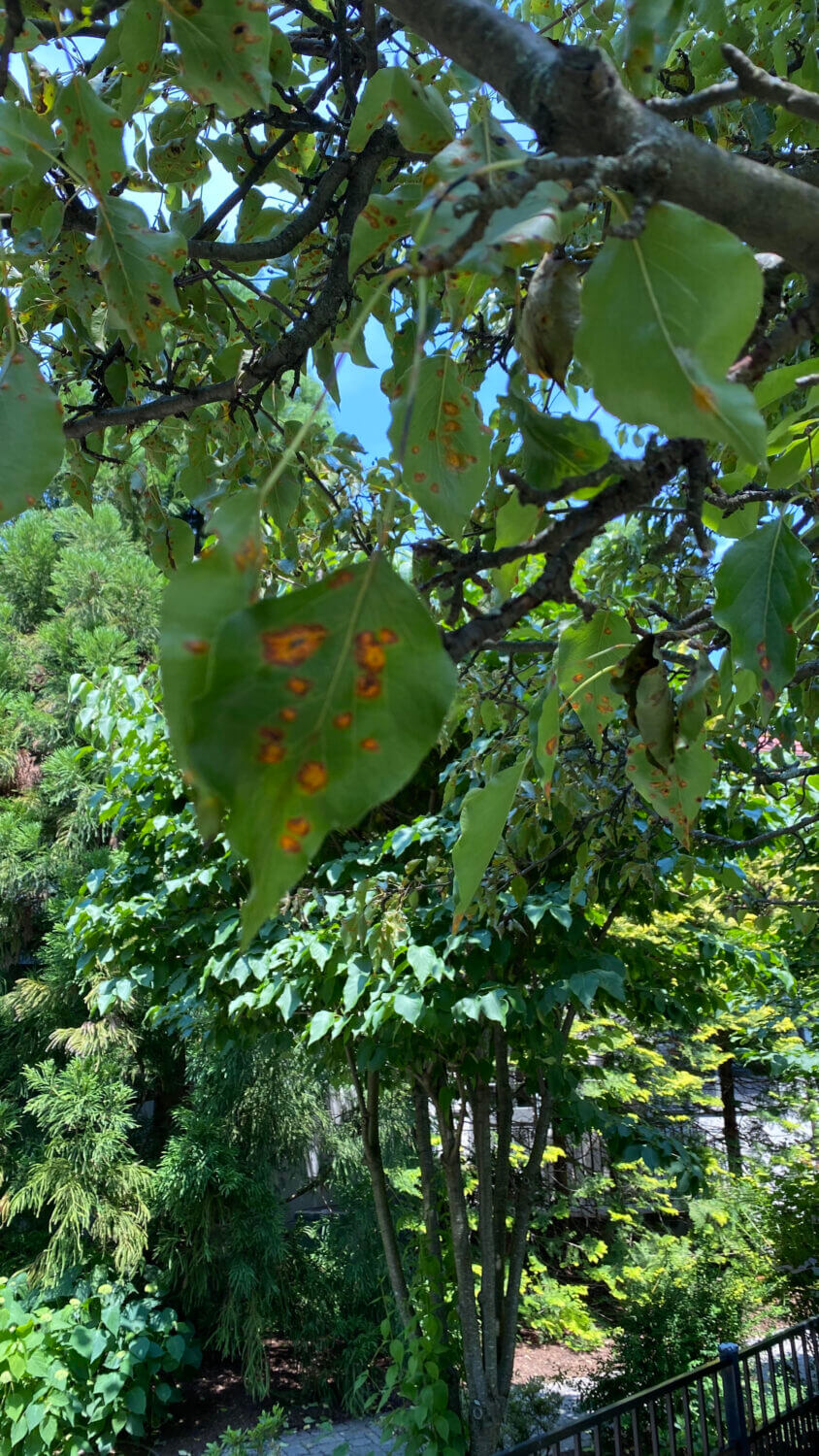
We’ve been receiving calls over the past couple days from clients concerned about trees that are losing leaves. When we’ve visited the sites, we found leaves on the ground with varying sizes of orange rusty blotches where the leaf is distorted. The orange areas are fruiting bodies of the fungus that causes rust diseases.
Rust is a fungal disease, most easily identified by the orange/rust colored splotches of fruiting bodies, that survives by invading and taking nutrition from host plants. When a living organism such as a plant is attacked, tissue damage or death may result. Rust is a disease that attacks crabapple, apple, hawthorn and others in the rose family, as well as some shade trees such as ash.

Rust rarely kills its host.
However, if the disease is severe, ornamental value may be lost. The fungi that cause rust attacks new growth, especially in early spring when conditions are good for fungal development. Rust is an unusual disease in that it spends time on two different host species. Rust overwinters on its alternate host such as cedars in the case of cedar-apple rust. Spore release coincides with early growth of the host plants. Cool, moist conditions favor heavy infections, while warm and dry conditions will limit disease severity and spread. Host susceptibility will also determine the extent of infection and damage. There is wide variability in susceptibility among different varieties of a species. Likewise, some crabapples will have major damage in a mild year and others may have minimal symptoms in a year with high disease pressure.
As leaves grow, rusty spots or lesions form on the surface. Through spring, the lesions grow, causing leaf curl or distortion. If the lesions grow enough to merge, early leaf loss may occur. Severe defoliation can lead to stress and reduce stored energy reserves.

Rust Disease Management
Management strategies vary based on severity and susceptibility. If severe infection causes major leaf loss, fertilization should be considered to help maintain energy reserves and preventive fungicide treatments should be considered for future years. Fungicide treatments are applied preventively. Three applications early in the season will usually provide adequate control during years of normal rainfall. Additional treatments may be needed in unusually wet seasons.
If you’re out and about and walking around your property and are finding a lot of leaves that have fallen off, please give us a call at (908) 204-9918. Our Licensed Tree Expert will come out to evaluate and help come up with a management strategy to help keep your plants healthy and looking their best.